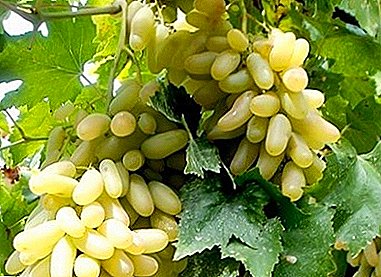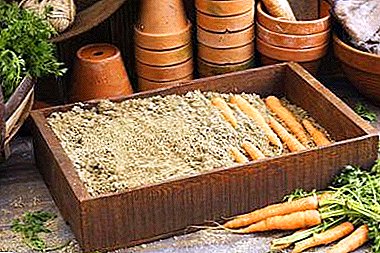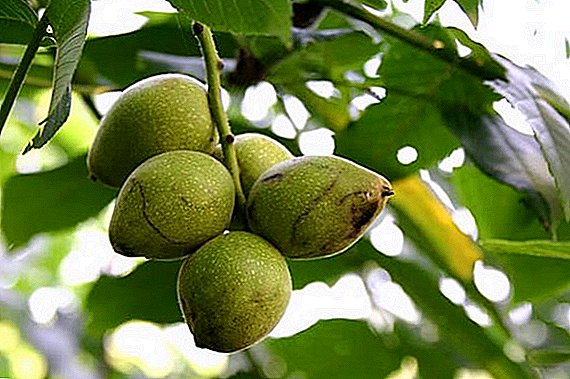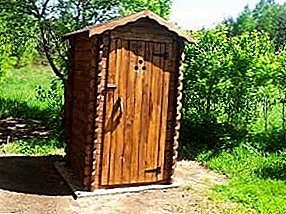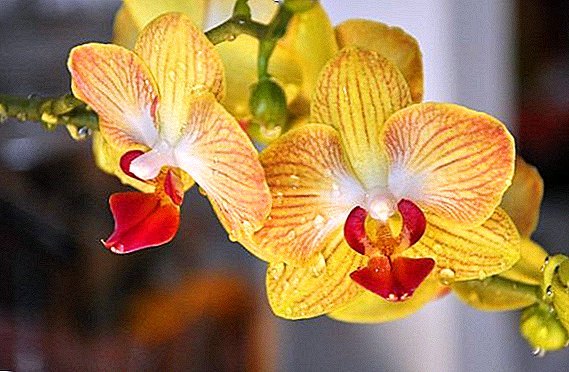 Today, orchid is not such a rare plant in a room flower garden. However, it is subject to various diseases and requires special care. Unfortunately, it is difficult to find any complete information about the maintenance of a flower, orchid diseases and their treatment.
Today, orchid is not such a rare plant in a room flower garden. However, it is subject to various diseases and requires special care. Unfortunately, it is difficult to find any complete information about the maintenance of a flower, orchid diseases and their treatment.
Therefore, we tried to cover the common problems and difficulties of growing orchids.
Problems with orchid flowering, how to eliminate them
This houseplant is quite demanding and capricious. Therefore, if you only brought it home after purchase and it began to wilt, there is nothing unusual about it. You just need to find a suitable place for him and properly care.
The orchid does not bloom
In order not to worry about the flowering of the orchid, even during the purchase it is necessary to clarify what kind of variety it is and what period of flowering it has. The fact is that different types of flower bloom at different times. But it happens that the expected flowering does not occur, while the green mass continues to grow. The main reasons for the lack of buds are the following:
- sudden changes in temperature;
- improper watering;
- rest violation;
- lack of light.
Did you know? The most common reason for the lack of flowers on the plant is a lack of light, which is why the plant itself begins to fade. Most varieties of orchids feel bad even in partial shade, but varieties such as pafiopedilum and phalaenopsis, can bloom in such conditions.
The lack of light is indicated by the color of the leaves: they turn bright green, while their natural color is light green. If the leaves turn yellow, it indicates an excess amount of ultraviolet radiation, that is, excessive light. Control measures: the flower must be placed in a more lighted place or removed in partial shade. 
Another common problem in the absence of flowering - root diseases. It is difficult to determine. Sometimes, even when the roots are rotting, the orchid continues to bloom.
But if it didn’t please the flowering for a long time, and the lighting is OK, you should check the root system. Most often, it begins to rot due to excessive watering.
In this case, plant transplantation and the removal of damaged parts of rhizomes will help. Periodic transplantation is basically beneficial for its development.
Orchid buds fade
As a rule, in this case, the problems are the same as described above. But there may be additional reasons. First of all, the orchid very sensitively reacts to the change of residence. If you recently bought it and brought it home, it is not surprising that orchid buds wither and fall.
Important! Lighting plays a major role in this process. It is logical that in the greenhouse it was suitable and sufficient, and at your house it may be missing or, conversely, be too much. Consider that there are shade-loving and light-loving varieties of orchids, this point needs to be clarified when buying a plant. So, on the north and northeast windows you can grow cambria and phalaenopsis. Angrekums cymbidiums, lelias, cattleyas, vandas and others are considered to be photophilous.
In addition, there may be problems with hypothermia orchids. These are very thermophilic plants, so you should make sure that in winter the temperature in the room does not fall below 22 ° C. Please note that the humidity of the air must be at least 70%, otherwise the flowers will also begin to fall. 
Orchid loves good air circulation, but does not tolerate drafts. She also reacts sharply to the presence of a number of different foods, especially fruits and vegetables that produce ethylene. It provokes accelerated ripening of buds, which can wither and fall off without even revealing.
Another reason for wilting buds can be pests. In particular, the mealybug feeds on their sap, leading to the premature death of the bud.
Do not forget that wilting and flowers fall off is a natural process. The duration of flowering in different varieties is also unequal. Some please with motley flowers for several months, others for several weeks. It is likely that you bought the plant after flowering.
Dark spots on the flowers
Sometimes they are not caused by disease, but by due to mechanical damage during transportation of the plant. Such spots do not spread along the flower, they dry up, they have uneven edges.
However spotting may occur due to moisture getting on the petals during irrigation or condensation when the plant is transported in a package. Because of this, the flowers can not only become stained, but also fall off.
If at the same time the plant is still in the sun, then a burn may occur in the places where water gets on the petals - the water will work as a lens.
Did you know? Fungal disease can cause brown spots on flowers. In this case, they can spoil literally overnight, when the whole plant is covered in spots. In this case, the affected leaves and stems will be watery, they can appear moldy plaque.
Rot: Prevention and Treatment
Most often when indoor growing orchids have to deal with the fight against rot. Moreover, problems are mainly caused by excessive care.
Brown Bacterial Rot
 The plant appears watery light brown spots on the leaves. Mostly young. After some time they darken, grow, gradually merging with each other. Moreover, the lower the ambient temperature, the more abundant the watering, the faster these processes occur.
The plant appears watery light brown spots on the leaves. Mostly young. After some time they darken, grow, gradually merging with each other. Moreover, the lower the ambient temperature, the more abundant the watering, the faster these processes occur.
If you just discovered these signs of orchid disease, you can still help her, cutting out damaged areas with a sharp instrumentby grabbing some healthy tissue. Cut edges should be treated with a preparation containing copper, or crushed coal.
If these manipulations cannot be done, the flower cannot be saved. It is better to get rid of it before the disease has spread to other vases.
The most common types of orchid such as pafiopedilum, cymbidium, cattleya and phalaenopsis are most commonly affected by brown bacterial rot. Prevention of such diseases consists in spraying the plant with a solution of copper sulfate once a month.
Root rot
 Root rot affects the roots of the plant, which soften and deteriorate. At the same time leaves of a plant get a brown shade. The cause of these processes are too high air humidity and temperature.
Root rot affects the roots of the plant, which soften and deteriorate. At the same time leaves of a plant get a brown shade. The cause of these processes are too high air humidity and temperature.
To get rid of the disease, it is necessary to adjust the conditions of the plant, as well as process the roots and soil with a topsin solution (0.2%) or a base solution (0.2%). This must be done three times, maintaining an interval of approximately three weeks. As a rule, for this, the pot is immersed in the solution.
To prevent disease, it is necessary to use a quality substrate, previously disinfected, for planting. Most often, orchid varieties of pafiopedilum, miltonia, cymbidium need such care.
Gray rot
 Orchid is characterized and such a disease of the leaves, as gray rot. It is easy to determine: dark islets appear on the leaves, covered with a fluffy gray bloom. Gradually, the leaves turn to soil rot, then - to the flowers, and then to the whole plant. The disease can begin with flowers, covering them with small brown spots.
Orchid is characterized and such a disease of the leaves, as gray rot. It is easy to determine: dark islets appear on the leaves, covered with a fluffy gray bloom. Gradually, the leaves turn to soil rot, then - to the flowers, and then to the whole plant. The disease can begin with flowers, covering them with small brown spots.
The disease occurs due to improper care - high humidity combined with low temperature. But sometimes the cause becomes excessive enthusiasm for fertilizers with a high nitrogen content, which reduces the resistance of the plant to the disease.
Gray rot - This is a fungal disease. Therefore, to combat it from the plant, it is necessary to remove the damaged areas, and its process completely fungicides.
And if the selected drug did not help, and after a while the signs of the disease appeared again, another drug should be used. When watering should apply tools that increase the resistance of plants to disease.
Important! Try not to put orchids close to each other or to other plants. Then, in the event of gray rot on one plant, the fungus spores will not be able to spread to the next.
Gray rot is most readily settled on orchids that bloom with white flowers: Cattley, Cymbidia, Phalaenopsis.
Black rot
A fungal disease occurs when the flower is in a too cold room. Especially if the plant was sick or survived the attack of pests before. In this case, the spots on the leaves of the orchid are removed with a sharp and sterile instrument, and the trimmed edges are treated with Bordeaux liquid or charcoal.  Next, the plant must be transplanted into another pot or in the same, but pre-sterilized. It is planted in a fresh sterile substrate, and it is necessary to get rid of the former. After transplantation, the plant creates the necessary conditions.
Next, the plant must be transplanted into another pot or in the same, but pre-sterilized. It is planted in a fresh sterile substrate, and it is necessary to get rid of the former. After transplantation, the plant creates the necessary conditions.
Frequent patients with a similar diagnosis are orchids of the Cattleya and papiopedilum varieties.
Fusarium rot
 If the orchid leaves have turned yellow or there are spots on them, you will probably have to deal with fusarium rot. In this case, the leaves soften, curl, and the spores of the fungus give them a pinkish tint.
If the orchid leaves have turned yellow or there are spots on them, you will probably have to deal with fusarium rot. In this case, the leaves soften, curl, and the spores of the fungus give them a pinkish tint.
The main cause of such diseases is high humidity with poor air circulation. Most often, such a disease affects orchid varieties of epidemic rooms, miltonia, phalaenopsis if the necessary conditions are not observed.
Recommended treatment treatment of the plant three times a day with a base solution (0.2%). Carefully process all plants, as rot spots can appear on shoots. In this case, for the period of treatment, it is necessary to abandon spraying the plant, to ensure that it does not stand in drafts.
Leaf disease: symptoms, prevention and treatment
Orchid diseases can have a viral, bacterial or fungal character and manifest themselves in completely different ways: in the form of raids, stains, rot. Accordingly, for each disease has its own method of treatment.
Important! Almost all orchids lose their color over time, even with proper care. The lack of light weakens the plant's immunity, but the light-loving orchid does not tolerate direct sunlight. Especially carefully it is necessary to teach the orchid to the spring sun, shading those plants that stand on the south side so that they do not get sunburn. Gradually getting used to the sun, flowers will require shading only on a hot afternoon.
Anthracnose
 Most often, this fungal disease affects the leaves of a plant. Tiny, but clear round brown spots appear on them, which increase, connecting with each other. Large affected areas turn black, forming dips. If the plant has been ill for a long time, a pink or yellowish patina may appear on these areas.
Most often, this fungal disease affects the leaves of a plant. Tiny, but clear round brown spots appear on them, which increase, connecting with each other. Large affected areas turn black, forming dips. If the plant has been ill for a long time, a pink or yellowish patina may appear on these areas.
The reasons: stagnant water in the leaf axils and high humidity.
Treatment starts with trimming the affected areas. Sections should be treated with ashes or activated carbon, and the plant itself - with preparations containing copper. Processing is carried out three times with intervals of ten days. In this case, it is necessary to reduce watering and completely abandon feeding.
To prevent fungus it is necessary to ensure that the air humidity does not exceed 70% and does not fall below 40%, while regularly and well ventilate the room. Monitor the presence of water in the axils of the leaves and pseudobulb. If she is going there, in time, remove with a napkin or cloth.
Orchids of phalaenopsis, papiopedilum, oncidium, miltonia are mainly susceptible to this disease.
Bacterial leaf spot
Phalaenopsis orchids are most susceptible to this disease. At first on the infected plants the leaves turn yellow, then darken, then soften and crack. In the resulting ulcers appears fluid.
To get rid of the disease, such areas are cut out with sterile and sharp instruments; sections are treated with iodine or activated carbon. If there are a lot of spots or the common vein is damaged, the treatment should be carried out with more powerful preparations. If after such procedures within 10 days of relapse did not happen, then the plant has recovered and is non-infectious.
There is a disease due to too bright lighting in the warm period of the year, excessive dragging of fertilizers or with improper watering.
Leaf deformation
Kinks on the leaves can cause ordinary mechanical damage. However, in some cases, they indicate insufficient watering of the orchid or its strong supercooling after watering.
Also pay attention to fertilizers. If they contain too much nitrogen, it can also cause deformation of the leaves of the plant: thickening, cracks, cracks, discoloration to dark green.
To get rid of the problem, it is enough to refuse fertilizer for some time. It is also recommended to wash the roots of the plant and transplant it. Please note that after this procedure, an orchid for some time may be stuck in growth - this is a normal process.
Leaf burn
 This kind of damage appears on plants usually in spring and summer. When the sun activity increases. Orchids need light in large quantities, but diffused, and the direct rays of the sun for it, as a rule, are destructive and cause burns.
This kind of damage appears on plants usually in spring and summer. When the sun activity increases. Orchids need light in large quantities, but diffused, and the direct rays of the sun for it, as a rule, are destructive and cause burns.
They provoke similar effects and the remaining droplets of moisture on the leaves and petals. In this case, the water, multiplying the force of the sun's rays many times, contributes to the burning of the leaves - on them appear discolored areas with brown edges. Over time, they dry up, forming holes.
The affected plant should be applied, paying particular attention to watering, but not flooding the flower. Heavily damaged areas should be removed by processing the edges of the slice. Feeding in this period is better not to use.
Mealy dew
About the appearance powdery mildew He speaks white bloom on the leaves and buds of the flower. Sheltered areas dry over time, and the plant itself dies. A disease occurs in conditions of high humidity in combination with high temperature - the so-called greenhouse effect.
As soon as you find signs of this disease, you should immediately correct the care and start treatment. For this the plant is treated with drugs "Topsin-M", "Scor" or a solution of colloidal sulfur.
As a preventive Orchid should be sprayed with "Phytosporin". It is recommended to do all homemade orchids, as any of them has the risk to catch powdery mildew.
Rust
Relatively rare, but no less dangerous disease. It also has a fungal nature and affects primarily the leaves of the plant.
Moreover, it strikes at first the lower part of the sheet, forming light spots. Over time, they appear red pads, in which the spores of the fungus ripen. Note that the disease appears on the weakest parts of the plant.
To get rid From him, it is necessary to remove the affected areas, no matter how large they are. Do not forget to sanitize the cut sites with a 20% alcohol solution or activated carbon. Also recommended process the plant with the preparations "Mikosan", "Ridomil", "Skor", "Topsin-M".
Black (black) mushrooms
The plant becomes ill due to the appearance on it of various pests: white scarab, mealybug, aphid. His spores multiply perfectly in their sweet secretions.
The fungus grows, clogging the stomata of leaves. As a result, the plant does not receive the required amount of light, weakens and, if not treated, dies. The treatment is treatment with all the same drugs: "Mikosan" "Ridomil", "Skor", "Topsin-M".
Viral Orchid Diseases
Oddly enough, but orchids can also be sick with viral diseases. If a similar diagnosis was found in one plant, it must be urgently removed from others and destroyed. There are no any effective methods of treating a plant for viruses.
The most unpleasant thing is that the virus does not manifest itself in the plant for a long time. About it may indicate the changed shape and color of the plant. Remember: if you have several flowerpots and watering is common in one container, all plants are infected.
It is possible to carry the virus when treating an orchid with tools. As soon as favorable conditions for its reproduction appear, it immediately becomes more active. Such conditions are a sharp decrease or increase in temperature, humidity, habitat change, which cause the orchid to stress.
If you suspect that a plant is infected with a virus, first you need to isolate it and treat it with any antibiotic, and then with a fungicide.
Orchids are amazing flowers that can decorate any room. But they are quite demanding in the care, deviation from which leads to various diseases. It is necessary to constantly carry out various preventive measures, to stimulate the growth and flowering of the plant.


